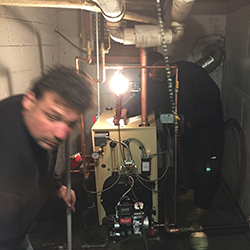Working Pressure and Temperature

Low-pressure boilers are limited to a most outrageous working strain of 15 PSIG (pound-power per square inch measure) for steam and 160 PSIG for high temp water. Most Boiler Servicing Coventry used in HVAC applications are low-pressure boilers. High-pressure boilers are worked to work over the cutoff focuses set for low-pressure boilers and are ordinarily used for power age. Working water temperatures for warmed water boilers are limited to 250o F.
Fuel Type
- In business structures, combustible gas is the most generally perceived radiator fuel, since it is typically speedily open, burns through flawlessly, and is usually more reasonable than oil or power. A couple of boilers are expected to burn through more than one fuel (regularly oil gas and fuel oil).
- Twofold fuel boilers outfit the manager with fuel reiteration if there should arise an occurrence of a fuel supply obstruction. They moreover license the customer to utilize the fuel oil during “active time” rates for combustible gas. In events when the rates for oil gas are more critical than the other fuel, this can diminish fuel costs by using the more affordable substitute fuel and confining combustible gas used to happen only during “off-top” times.
- Electric boilers are used in workplaces with requirements for an unobtrusive amount of steam or where combustible gas isn’t available. Electric boilers are known for being perfect, quiet, and easy to present, and decreased. The shortfall of start achieves diminished multifaceted nature in arrangement and action and less help.
- Warming parts are easily replaced in case they miss the mark. These sorts of boilers can be used to convey low or high-pressure steam or water and maybe extraordinary decisions for customers who are restricted by surges rules. Sizes range from 30,000 to 11,000,000 BTU input with all-around capability generally in the extent of 92% to 96%.
Draft Methods
The strain contrast between the pot start chamber and the vent (furthermore called the exhaust stack) conveys a draft that brings the consuming the evaporator and up the line. Customary draft boilers rely upon the ordinary softness of hot gasses to incapacitate start things up the pot vent and bring outside air into the consuming chamber. Mechanical draft boilers join Forced Draft, where the air is compelled into the consuming chamber by a fan or blower to keep a positive strain; and Induced Draft, where the air is drawn through the start chamber by a fan or blower to stay aware of negative pressure.
Size and Capacity
Isolated Boilers are minimal in size and limit and are every now and again expected to replace a gigantic single pot with a couple of little boilers. These confined boilers can without a doubt fit through a standard doorway, and be sent in lifts and stairways. The units can be set up in a variety of plans to utilize confined space or to oblige new equipment. Estimated boilers can be coordinated to capably satisfy the need of the warming weight.
Gathering Method
Standard high temp water boilers work without social affair out water smoulder from the line gas. This is fundamental to prevent utilization of the warmer parts. Gathering Boilers work at a lower return water temperature than standard boilers, which makes water smoulder unite out of the exhaust gasses. This allows the uniting evaporator to remove additional hotness from the stage change from water smoke to liquid and constructs radiator capability. Some carbon dioxide separates in the condensate and constructions carbonic destructive. While some solidifying boilers are made to manage the dangerous development, others require a couple of techniques for killing the condensate. Customary non-social event boilers ordinarily work in the extent of 75% – 86% start efficiency while combining boilers all-around work to the extent of 88% to 95% consuming adequacy







